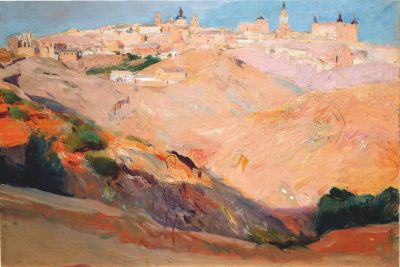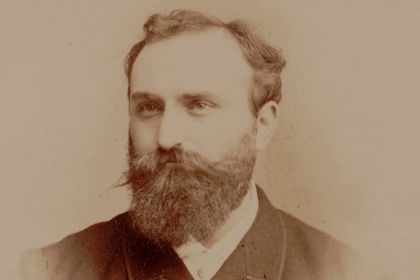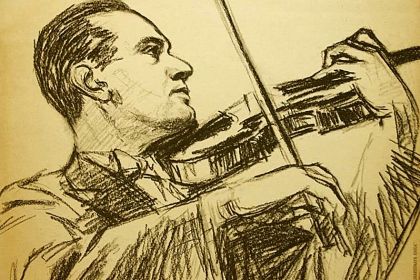Violin
Edouard Lalo's Symphonie Espagnole brought to life by the best violinists of the 20th century

View of Toledo by Joaquín Sorolla
Symphonie Espagnole is an iconic work by the French composer Edouard Lalo, which is believed to have launched the fashion for Spanish folk themes in the classical music of late Romanticism. Following the premiere of Symphonie Espagnole in 1874, many influential Parisian composers such as Emmanuel Chabrier, Claude Debussy, and Maurice Ravel drew inspiration from the fiery guitar rhythms of the flamenco and seguidilla dances, incorporating the spirit of Spain into orchestral and piano masterpieces.
Despite the title implying a symphonic form, the five-movement work was originally written as a violin concerto intended for the outstanding Spanish violinist Pablo de Sarasate. The still prevalent public interest in the genre, multiplied by impeccable violin passages, placed Symphonie Espagnole in the spotlight of prominent violinists of the 20th century, including David Oistrakh, Leonid Kogan, and Yehudi Menuhin.
The first movement, titled Allegro non Troppo, opens with loud fanfares to anticipate the entrance of a solo violin whose ornate folk melodies either accelerate or slow down, organically fitting into a powerful symphonic arrangement.
Listen to Allegro non Troppo from Symphonie Espagnole performed by Jean Martinon and Philharmonia Orchestra with David Oistrakh as a violin:
Inspired by the old Castilian dance seguidilla, the short second movement is a scherzo featuring soulful violin lines that soar over pizzicato strings to imitate a guitar accompaniment.
Listen to Scherzando from Symphonie Espagnole performed by Kiril Kondrashin and Philharmonia Orchestra with Leonid Kogan as a violin:
The central Intermezzo contains a set of dramatic minor melodies emphasized by the jerky and loud response of the orchestra that appears in a sporadic manner. Intermezzo contrasts quite sharply with the rest of the work, and it is speculated that for this reason it had mostly been omitted during performances, at least until Yehudi Menuhin broke off this unjust tradition to present the full version of Symphonie Espagnole in the 1950s.
Listen to Intermezzo from Symphonie Espagnole performed by Eugene Goossens and Philharmonia Orchestra with Yehudi Menuhin as a violin:
Andante, the fourth movement, is strongly associated with the form of a song in which the violin imitates either plaintive or playful vocals, while the orchestra creates a smooth yet hushed accompaniment to these true folk melodies.
Listen to Andante from Symphonie Espagnole performed by Daniel Barenboim and Orchestre de Paris with Itzhak Perlman as a violin:
The bravura of the Allegro finale varies fast dance forms by having the violinist perform major virtuoso passages while the orchestra places accents, leading into the explosive rhythms of the closing cadence which will exhilarate even the most pragmatic listeners.
Listen to Allegro from Symphonie Espagnole performed by William Steinberg and RCA Victor Symphony Orchestra with Jascha Heifetz as a violin:
For Edouard Lalo, Symphonie Espagnole is a special work that turned his life upside down as if mirroring the Spanish dance from the concerto's finale. Well into the sixth decade of his life, the composer had been doubting the correctness of his career choice that went against the will of his father who had wanted to see Lalo in military service. However, Lalo's timely acquaintance with Pablo Sarasate prompted the composer to write several violin-oriented works that brought him to the top of the music scene.
Three years after the absolute success of Symphonie Espagnole, Lalo wrote to Pablo de Sarasate:
"Your arrival in my life has been my greatest artistic opportunity ... without you, I would have continued to write insignificant odds and ends".



